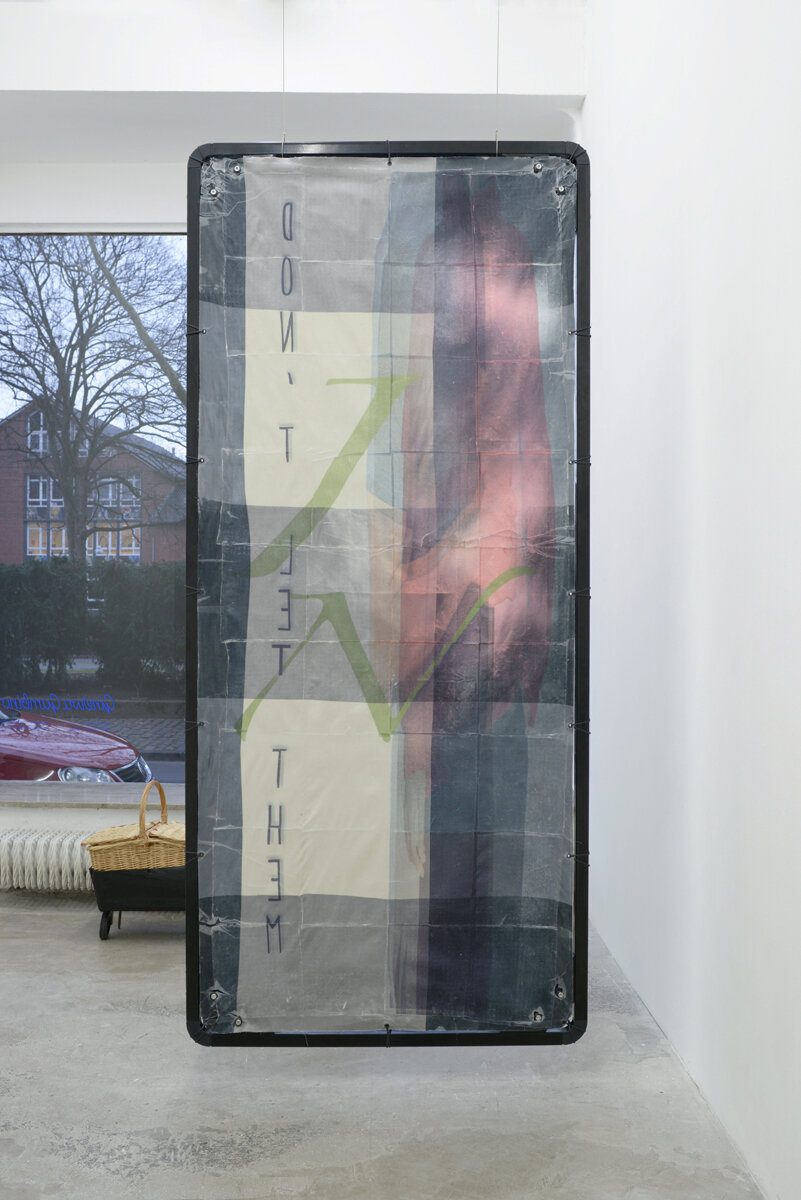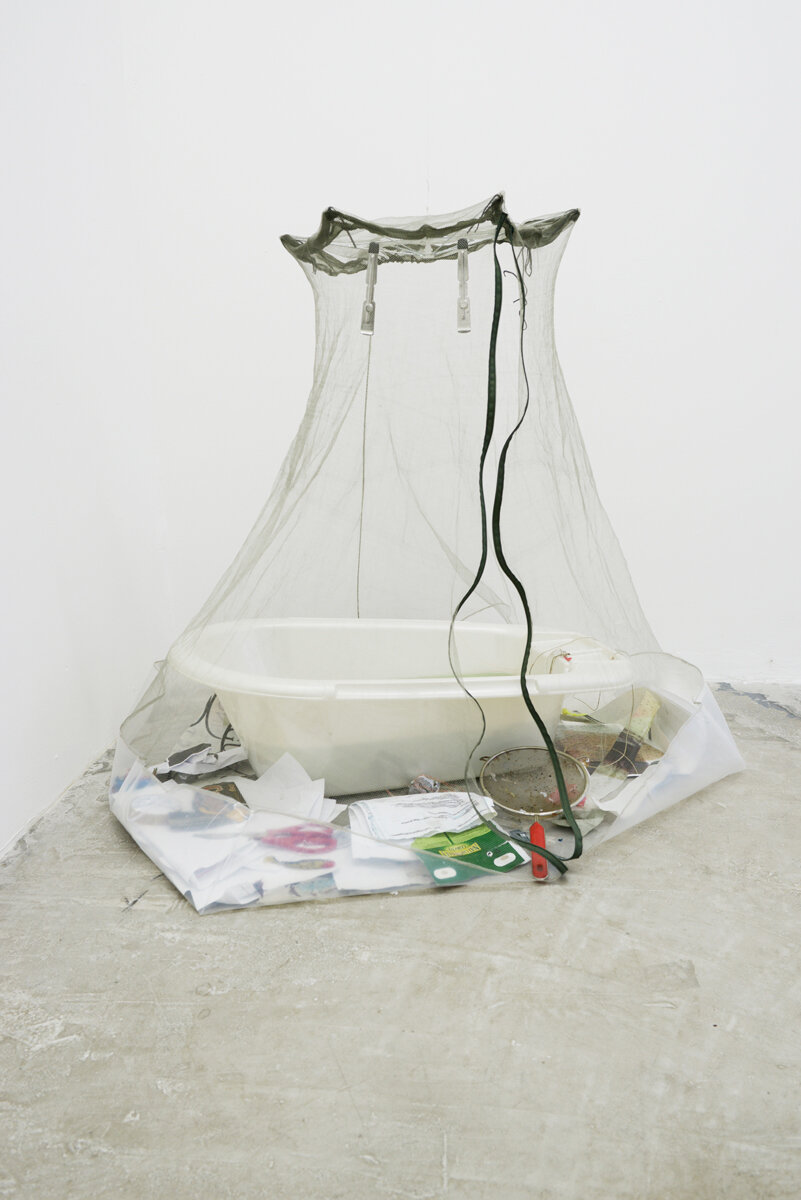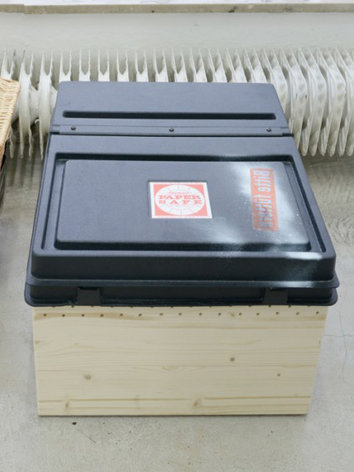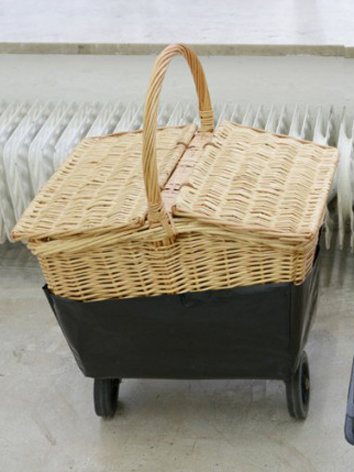AUDE PARISET
CRAWLER
Jan 16 – Mar 28 2015
Ginerva Gambino is proud to announce “Crawler”, the solo exhibition by French artist Aude Pariset. For this show, Pariset has created new works specifically for the space. As an installation, the works will emulate the process of a natural life cycle of creation, growth, decay and finally recycling through composting. The exhibition is a continuum of themes that have been significant throughout the artist’s work: technological advances and its counterpart obsolescence, as well as their intermediate stages. As with most of Pariset’s exhibitions, the exhibited pieces will be visible for the duration of the show, but the process of production continues through an orchestrated process of decay.
The installation at Ginerva Gambino consists of three stations:
A tall bed frame with printed rice paper mounted on a bed sheet is already visible from outside the gallery space. The print is a large composite image, consisting of elements from garment advertizing and created after popular thriller movie posters. We see the pale frame of two unidentifiable figures with the alarming text “DON’T LET THEM IN” written next to them. Together with the warning from the print, the bed sheet and the bed frame – both representations of home or comfort – further emphasize a situation most commonly known through horror movies, where the host is punished for her naïve trust in a stranger and therefore allows for her own misfortune to happen by letting them in.
The second station consists of a small baby tub in a mosquito tent. In this small entropy studio, trashed, failed or test art works – most of them photographic prints – are soaked in water and exposed to incoming light. Whereas photography was once a means to capture and preserve, its outcome is now slowly dissolving and its colors are fading, as if undergoing a process of reversal. Once the material starts to deteriorate, it finds its final stage as a compost mixture in the third station.
The final and third station consists of two custom made containers. Both of them host a small colony of Dendrobaena worms. The material from the second station is given to these compost worms as food. It will reach its final stage here, where it will be completely dissolved. The sensitivity of the worms to light requires them to evolve in a dark environment; lightproof materials have been used for the containers to meet this requirement. Coincidentally, the latter also echoes the requirements for the technology of analog photography.
“Crawler” is an informal way of naming earthworms, as well as a reference to a crawler stage in a baby’s development. Crawling is an important step in the development of a child from dependence to autonomy. As an analogy to this process, one may also perceive the presentation of an artwork in an exhibition in a similar fashion, from its developmental stages while invisible to an audience, to its confirmed status as art work through its presentation in an art context. In this exhibition, parts of these unseen or undeveloped works from Pariset‘s studio are being discarded and dissolved during the exhibition. This task is given to the crawler worms in the containers. Here the works find their final stage, being recycled as food and finally dissolved through composting.
The exhibition will be accompanied by a limited edition poster, published by Verlag für zeitgenössische Beobachtung (ISBN 978-3-944877-10-5).
Aude Pariset lives and works in Berlin. Her work has been shown at Palais de Tokyo; 12e Biennale de Lyon; MJ Gallery, Geneva; Favorite Goods, Los Angeles; UCCA, Beijing; CEO Gallery, Malmö and Sandy Brown, Berlin, amongst others.

'Bedroom Poster', 2014
Bedframe, inkjet one edible rice paper, spray paint, grommets, foam rubber cord
90 × 200 cm
Unique

Aude Pariset
'Peapod Rubbish Bassinet', 2014
Baby tub, water, pvc, mosquito net, colander, scissors, studio trash, rope and various fishing gear
Dimensions variable
Unique

Aude Pariset
'Hungry Bin (Paper Safe)', 2014
Darkroom paper safe, wood, soil, Eisenia hortensis worms, studio and household organic waste, laser print transfer, spray paint
50 × 40 × 30 cm
Unique

Aude Pariset
'Hungry Bin (Picnic)', 2014
Wicker basket, soil, Eisenia hortensis worms, studio and household organic waste, wheels
42 × 29 × 23.5 cm
Unique